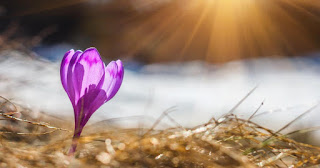Does climate change have impact on the signs of spring around the Baltic Sea? Join the phenological studies 1.03-1.06.2021!
The BSP is inviting you to join the "Phenological studies!"
The aim of the studies is to observe when spring appears in the different countries around the Baltic Sea - to keep an eye on the spring signs by learning those 23 species on the worksheet and marking down when and where did you first saw that species.
The observations were started by a little group of pupils from Finland, Sweden and Estonia in 1992 within the UNESCO Associates Schools Network (ASPnet). It has grown up to a common programme of the Baltic Sea Project within the UNESCO ASPnet. Phenological studies is a fun and practical outdoor activity recommended for primary schools but can be done with the secondary school as well by adding the links with the climate change and human impacts into the lesson. This programme does not require special equipments or preparation, and motivates students to observe nature during the spring season. The pupils can observe nature alone, with their family members or with class.
The participants have to observe the named species on the worksheet and write down when and where they first saw them. Teachers or parents can print our this poster and put it on the classroom wall, so every day when students wake up, they can check who has seen some species and try to notice them first. Like a littel spring noticing competition :)
This nature watch will last from March till the beginning of June because the seasonal climate is changing differently for different countries.
Since it is done in different countries, we kindly ask you to enter the DATE, OBSERVATION PLACE (coordinates if possible), YOUR NAME, SCHOOL NAME, COUNTRY NAME in the comments under the right species picture to this Padlet worksheet.
When the "Spring watch" ends, our citizen science team enters them into the GBIF biodiversity database - only this way we can contribute to the citizen science together! :)
More info from Gedy Matisen, gedy.matisen@tartuloodusmaja.ee
What is the difference between weather and climate? How can we use data from spring signs to draw conclusions about climate change?
Watch this National Geographic video and discuss this topic with your peers:
When climate changes are rapid, many species have to adopt with new conditions in their habitats, otherwise their old "habits" can become dangerous for their survival. Watch this National Geographic video about Snowshoe Hares and their changing camouflage. Discuss with your peers if you have any such species that would be affected the way this rabbit is.

Which is the best product among those listed in this site?Best Watches for Office Wear
ReplyDeletehow i got my Ex lover back after a divorced by the help of DR NCUBE a marriage/relationship specialist. contact him if you need help WHATSAPP DR NCUBE ON +2348155227532
Deletehis email is..... drncube03@gmail.com
he also have #herbs for
#hiv/aids
#cancerdisease
#fibroid
#diabetes
Nice post. good information share with us. nice post. i am also using a blog naturalisation-uk. Visit our website at naturalisation-uk
ReplyDeleteI love your blog post about the Baltic Sea project and the different things you did to gather data. It's a great way to help people understand how they can find information on their own. Keep up the great work!Paracord Survival Watch
ReplyDelete